The Road to Installing 20 Million Public EV Chargers Worldwide

With the number of electric vehicles (EVs) on roads around the world reaching approximately 200 million by 2030, a reliable and efficient EV charging infrastructure is also required to keep them moving. Estimates vary from source to source, but to maintain the ideal charger-to-vehicle ratio – one public charger for every 10 to 15 cars — up to 20 million public chargers would need to be installed by 2030 to keep vehicles running. When private chargers are included, BloombergNEF estimates up to 490 million will be needed by 2040.
Currently, only about 2 million public chargers are installed. That’s an additional 18 million public chargers required in the next seven years. This massive demand for electrification is driving substantial development across not only the automotive industry, but also in the energy storage industry and even retail environments — where many chargers will be installed.
Below, we explore some key trends in the EV charger ecosystem.
1. AC home and office chargers are vastly more common than DC fast public chargers
While EV charging technology continues to evolve, there are currently three main types of EV chargers — levels one through three.
Home or workplace AC charging can provide convenient options but require several hours of charge time, making public high-voltage DC chargers a key part of the infrastructure needed for fueling EVs. High-powered DC chargers are the fastest growing of all public options. Power Technology expects the public fast charger market to grow at a 22% CAGR between 2021 and 2030, compared to 19% for AC public chargers and 8% for DC low power. Public fast chargers are also gaining efficiency, with the average fast charger power output soon expected to jump from 500V to 800V.
Despite the high demand for DC chargers, research from BloombergNEF’s EV Outlook showed that 70% of all EV charging still occurs at home or work, where slower, private AC chargers can be an effective solution during the span of several hours.

While the number of EV chargers is increasing globally, there are still wide regional differences in terms of types of chargers and how charging infrastructure is being deployed — starting with regional prioritizations of AC vs. DC chargers.

2. Regional differences in types of chargers and how charging infrastructure is deployed
The regions dominating EV deployment — the U.S., Europe, and China — differ in terms of the available charging technology, the major companies providing it, and the speed of production and deployment. Energy-related factors, like the ability of the grid to support widespread EV charging, are also influencing regional differences in charging technology — even within a country (specifically in the U.S.). Except for China, a lack of standardization amongst charging technology has made it difficult to scale this infrastructure globally.
United States
In the United States, along with Japan and South Korea, the majority of EV charge points installed are Level 2, faster AC/slower DC chargers. According to Frost & Sullivan, they are produced mostly by ChargePoint (45%) and Tesla (10%). However, when it comes to DC chargers, Tesla dominates the market with a nearly 40% share throughout the country thanks to their network of Superchargers. Other market players include ElectrifyAmerica (21%), EVgo (11%), and ChargePoint (9%) all of which are expanding their network and are compatible with multiple brands and models of EVs.
The U.S. utilities ecosystem is comprised of many smaller, often private companies, making it difficult for organizations to commit to the capital-intensive process of scaling charging infrastructure. Additionally, the U.S. depends on an extensive highway system, and people are spread out amongst primarily single-family homes. But recent funding from the government (discussed in more detail further down) is supporting the creation of a public charging system station network that could be as widely available as gas stations.
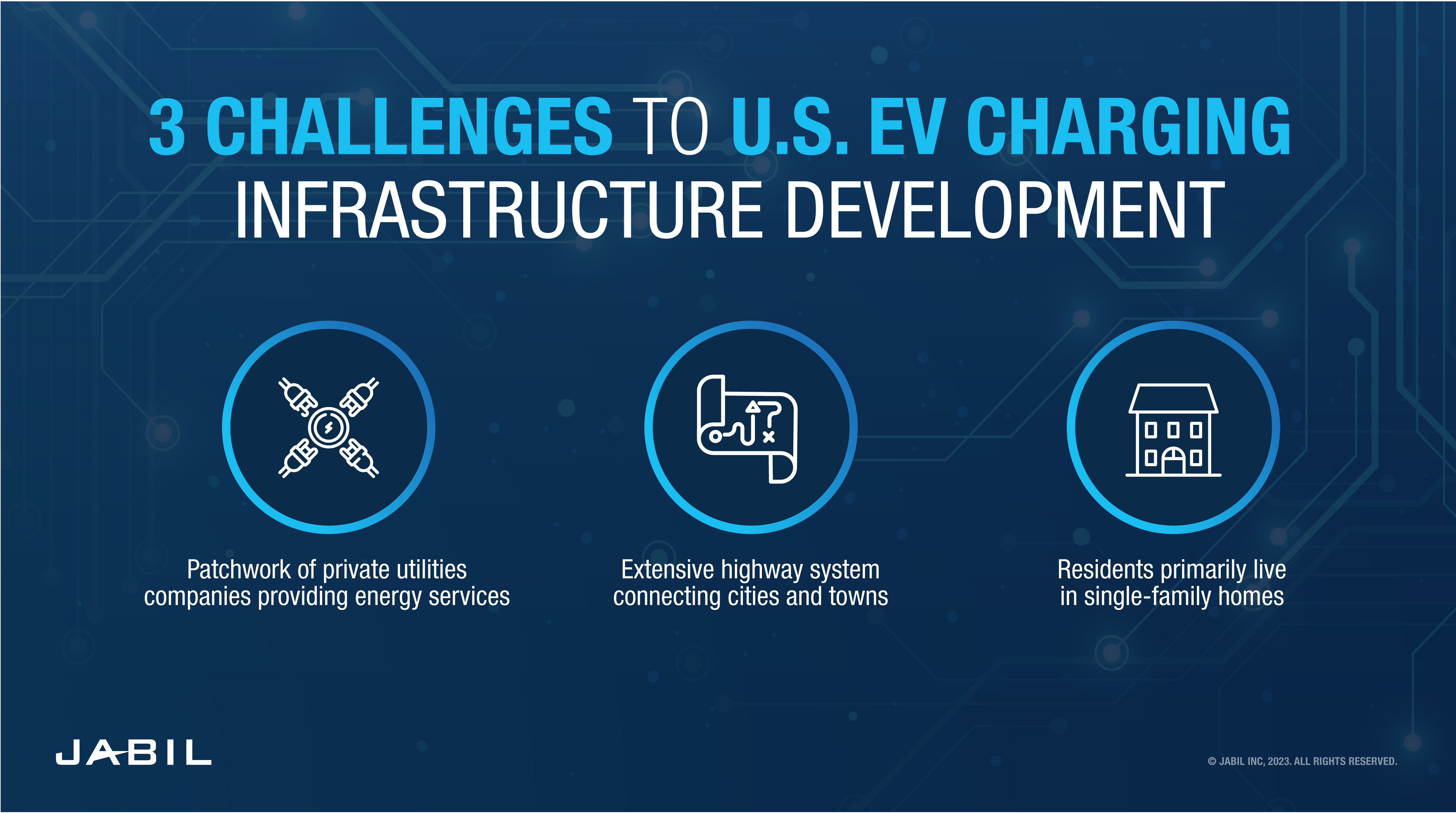
Already there has been some progress, like Volvo and Starbucks partnering to build DC fast chargers every 100 miles across a 1,350-mile route between Denver and Seattle. Similarly, GM has partnered with EVgo to install 2,000 DC fast-charging stations at rest stops across the U.S. and another 40,000 at affiliated dealerships. This is a great start for helping spur adoption of EVs, but it may not be enough to meet all the needs of long-haul drivers or those with limited access to charging infrastructure in general.
China
In China, the splits between private vs. public and AC vs. DC chargers are a bit more even than in Europe and the U.S. As of May 2022, according to the China Electric Vehicle Charging Infrastructure Promotion Alliance, 57% of the country’s chargers were AC, and 43% were DC; similarly, 59% were private, while 41% were public. The top four charger OEMs — Star Charge, Tgood, China State Grid, and YKCCN — often swap market positions based on new installations.
EV charging infrastructure in China is rapidly developing to meet the growing demand for electric vehicles, in part driven by strong pro-EV policies from the Chinese government. China’s population also tends to live in densely populated apartment buildings in major cities like Beijing, Shanghai, and Shenzhen, which have dedicated EV charging networks. These networks feature some of the world’s fastest high-speed chargers. For example, in 2022, Xpeng Motors began deploying fast chargers with a maximum 480kW output that can charge a battery from 10% to 80% in just 15 minutes — much faster than conventional chargers.
Battery swapping infrastructure is an alternative to traditional EV charging. Electric car owners can exchange their depleted battery for a fully charged one at a designated swapping station instead of waiting for their car's battery to recharge. This swapping process typically takes less than five minutes, providing a faster and more convenient alternative to traditional charging methods.
Battery swapping is especially popular in China due to the dense urban population and the currently limited availability of charging infrastructure compared to the number of EVs in many areas. One company leading the charge is NIO, which has already deployed more than 1,000 battery swapping stations across China and plans to build an additional 1,000 throughout 2023. This could be a fast, convenient, viable alternative to traditional EV charging.
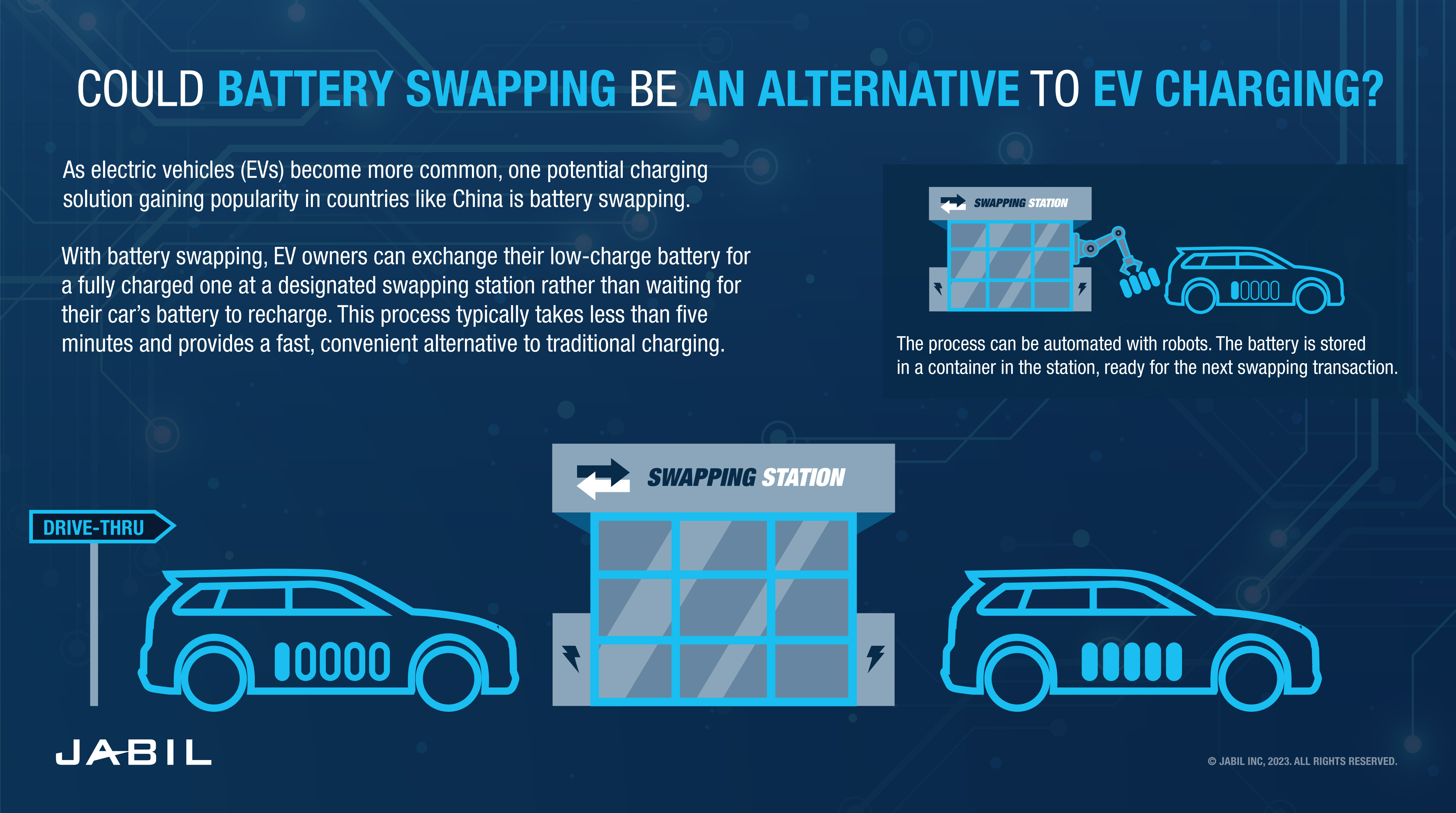
Europe
Looking at the European EV charger market, 70% of installed chargers are Level 2 — AC chargers that use transformers to deliver a charge considerably faster than their typical home charger counterparts — led by EVBox and Allego. Tesla’s Superchargers have a strong presence in Europe's DC charger market (24%), but the rest of the market is highly fragmented across roughly a dozen charging OEMs.
Other charging solutions are beginning to emerge across the region. Germany and Norway are leading the way with their adoption of battery swapping, similar to the Chinese model. As of March 2023, NIO has opened 13 swap stations across Norway, Sweden, Denmark, Germany, and the Netherlands, with plans to open 100 more around the continent within a year.
The dense population in urban areas of Europe has a significant impact on the EV charging infrastructure in the region. With limited space, it can be challenging to accommodate private charging stations for all of the electric vehicles on the roads. To address this challenge, some countries in Europe have taken steps to prioritize public charging infrastructure in urban areas. For instance, the Netherlands has installed over 111,000 public charging stations across its cities per the European Automobile Manufacturers’ Association (ACEA) ensuring that EV drivers have access to charging points when they need them most.
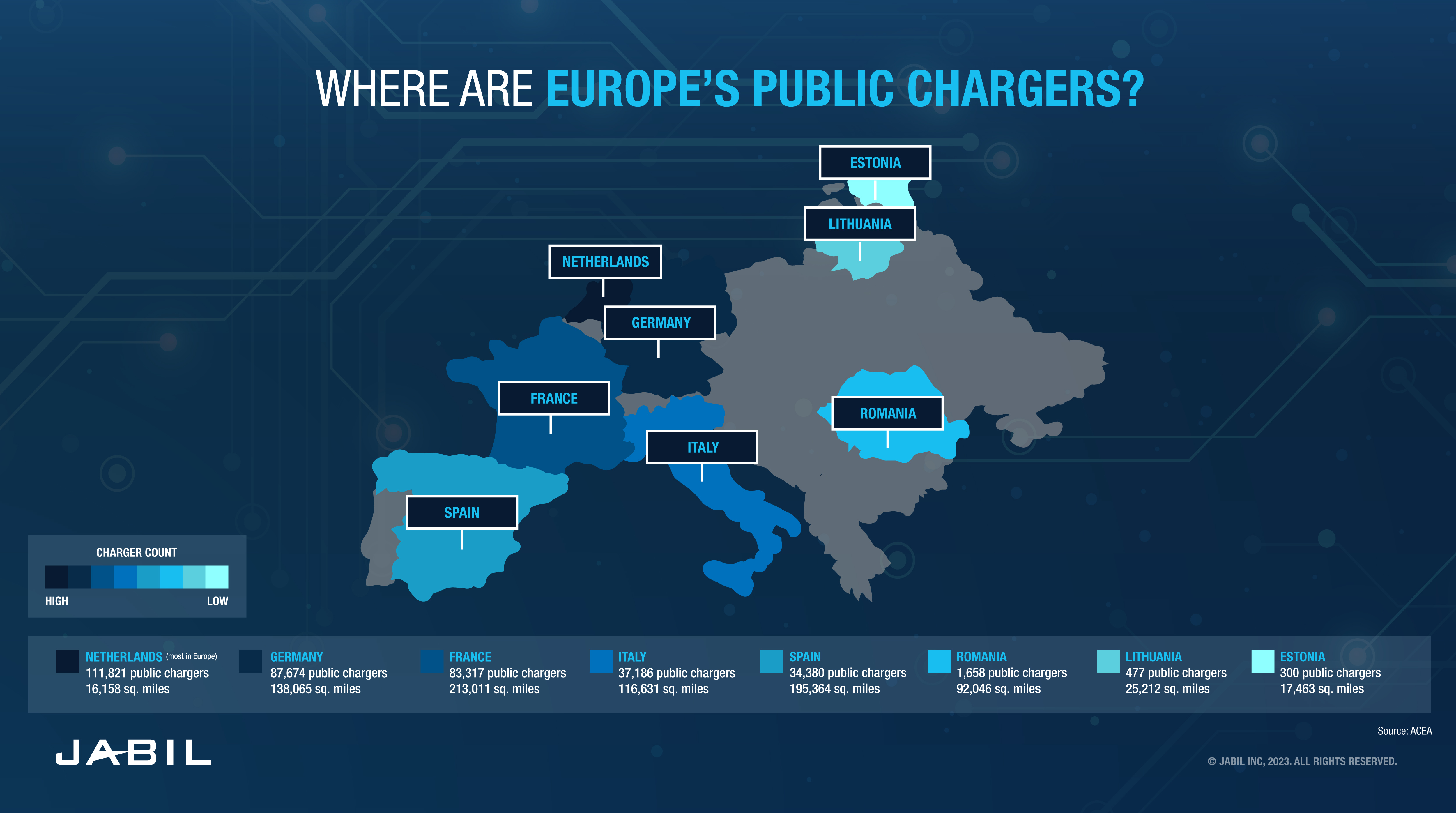
Many of these regional differences are driven by the variations in laws, levels of investment, and types of incentives national and local governments are putting into place around electric vehicles and charging infrastructure.
3. Government regulations, investment, and incentives in EV charging infrastructure is increasing
Governments around the world are recognizing the massive potential of EVs and the crucial role of charging infrastructure in their success. By providing grants and subsidies, governments are no longer leaving EV growth solely up to consumer demand. They are actively encouraging the transition to EV’s by addressing the need for adequate infrastructure.
There are many potential approaches that governments can take, such as providing tax breaks to companies who install charging equipment, regulating the availability of charge points on public roads, and standardizing the charging technology to promote greater interoperability. With clear and effective regulations, governments can ensure that building the necessary infrastructure becomes a priority — helping move the world closer to a sustainable and electrified transport system.
Europe continues to be at the forefront of this regulatory push to grow EV charging infrastructure. The EU requires that new and renovated residential buildings with more than 10 spaces prewire each of them for chargers. By 2025, a minimum of one in 10 parking spaces for offices and shopping complexes must have an EV charging station.
Individual countries in Europe are also implementing their own mandates to increase the availability of EV chargers and spur EV adoption. For example, Germany is investing $6.1 billion over three years in the installation of EV charging stations in every petrol station nationwide and is speeding up government approvals of charge points. Similarly, the UK government is promoting domestic EV ownership through grants for landlords to install chargers at apartment buildings and requires any new house or building to include EV chargers. This ties into a separate but related UK mandate that requires the end of ICE vehicle sales by 2030.
In the U.S., the 2021 Bipartisan Infrastructure Law is expected to be key to the development of a nationwide public charger system. To address the interoperability challenge found in most EV charging networks, the law authorized the creation of the Joint Office of Energy and Transportation. This office will work with automotive OEMs to establish a network of 500,000 public EV chargers across the country with uniform standards that are compatible with all different EV models. The legislation includes an investment of $5 billion to states for their charging initiatives. It also provides $2.5 billion in competitive grants for communities with innovative approaches to charging deployments. These projects must meet specific goals, like improving access to charging in rural and underserved communities.
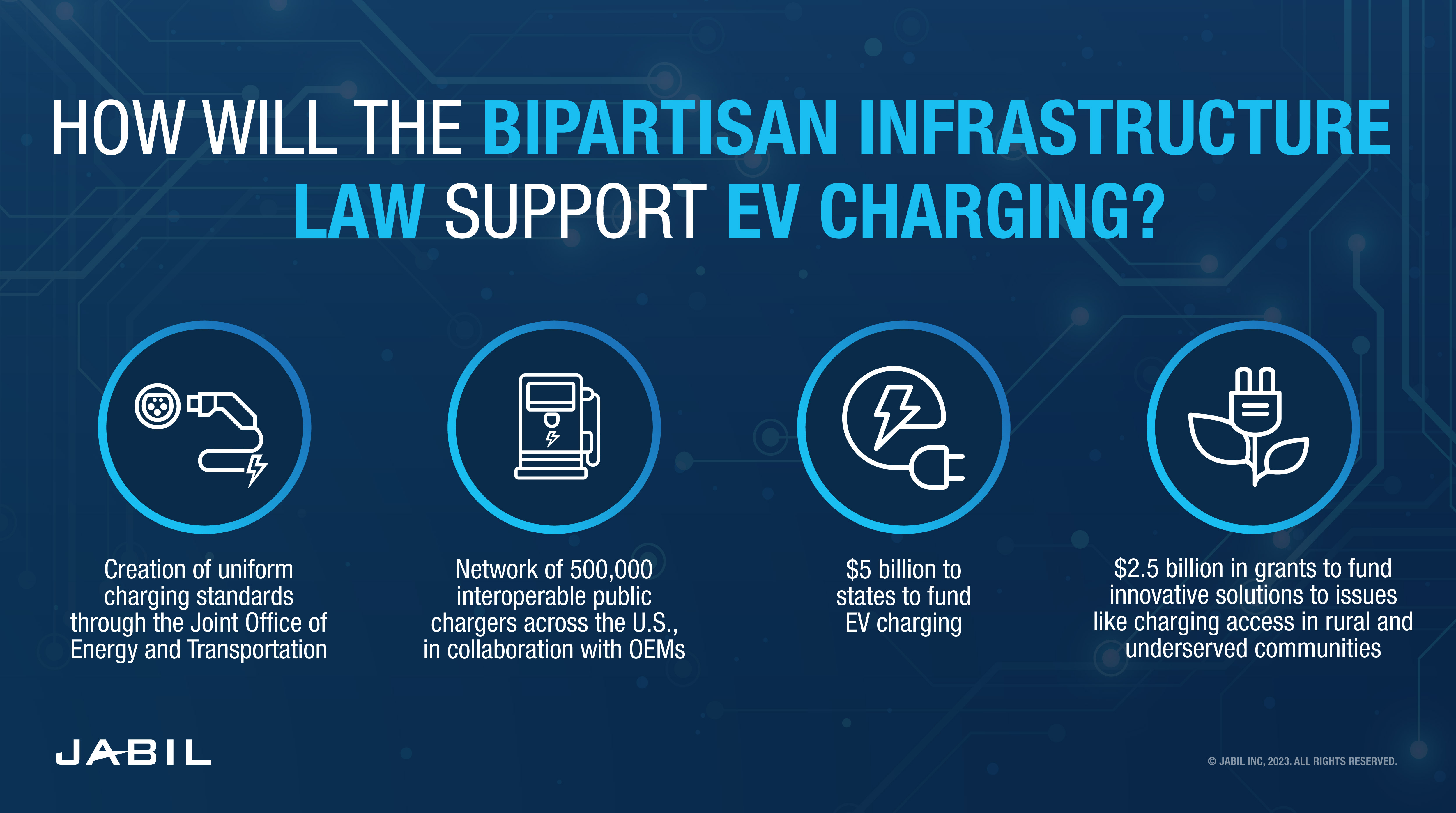
China is the undisputed world leader in EV adoption, and its government plays an integral role in driving this growth through its associated regulations and policies. The country has committed to accelerating the development of EV charging infrastructure within the country. It has adopted an array of measures to encourage sector growth, from setting a goal to support the charging of 20 million vehicles by 2025 to limiting public charging costs to only one or two times higher than the average cost to charge at home. China's pro-innovation stance on EV charging infrastructure can be seen as a catalyst for the wider shift toward sustainable transportation worldwide.
With governments across the world taking steps to incentivize EV adoption, different models of charging infrastructure are emerging to meet the growing demand for electric vehicles.
4. New charging models are making EV chargers more accessible
As electric vehicles become more popular, there is a growing concern that the lack of standardization in EV protocols, connectors, and systems could become a significant obstacle to widespread adoption. With EV chargers from different manufacturers being incompatible with EVs from different brands, the industry is facing a real challenge.
However, the automotive industry is beginning to tackle this issue head-on by embracing new, more interoperable charging models. These models prioritize compatibility, convenience, and accessibility, making it easier for EV drivers to access chargers wherever they go.
For example, top automotive OEMs, like Hyundai, Volkswagen, Audi, Ford, and General Motors make EVs that use the Combined Charging System (CCS). The CCS is a widely used charging standard for electric vehicles that enables compatible cars to charge from both AC and DC sources. This system allows a single plug to support all current and future electric vehicle models, regardless of their charging technology. The CCS uses the combo 2, or type 2, connector. Because of the popularity of the CCS type 2 is the most common type of EV charging connector a driver would expect to find at a charge point (as of early 2023).
The benefit of this standardization means that drivers can access charging stations regardless of their EV’s battery type, so they no longer have to worry about compatibility issues when they need to recharge. Additionally, this makes it easier for manufacturers to create universal EV chargers capable of supporting multiple types of EVs on the road today instead of developing distinct chargers for each individual model or make.
Tesla, which owns more than 61% of the public DC fast chargers in the U.S. according to a Car & Driver analysis of Department of Energy data, is also using CCS adapters to open its Superchargers to non-Tesla owners. As of March 2023, the company had started allowing drivers of other EVs to use Superchargers in select regions — mostly in California and Buffalo, New York, where Tesla has a production facility. Drivers of other vehicles will pay more per charge than Tesla owners or can sign up for a monthly charging membership through Tesla's app, but the move should effectively "unlock" an additional 7,500-plus fast chargers by the end of 2024 for drivers across the U.S.
The next frontier in accessible DC fast charging could be coming from the Asia-Pacific region's ChaoJi standard. Scheduled to launch in 2024, this will be an evolution of Japan's CHAdeMO standard and will replace China's GB/T standard. Importantly, ChaoJi is also designed to have backward compatibility and is expected to function with essentially all global charging standards. The International Council on Clean Transportation estimates the standard's working power will be around 500 kW, which would make it even faster than the Supercharger (with top power output of 250 kW).
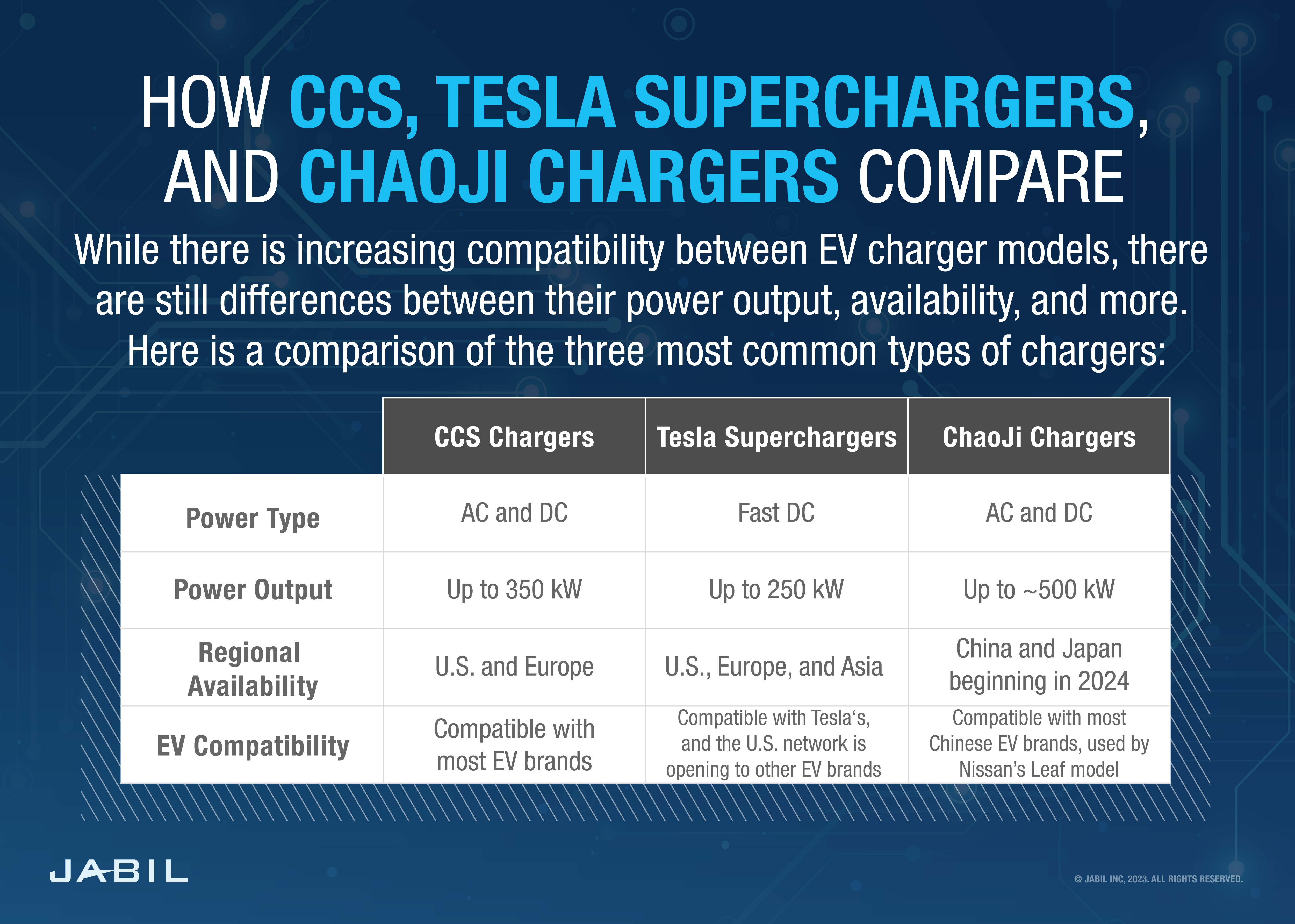
With government regulations in place and new, more interoperable charging models emerging, the next step is to ensure that EV chargers are adequately supported by the energy grid.
5. Bidirectional EV chargers will help create a more sustainable energy grid
As the world transitions toward sustainable energy generation, one major remaining challenge is a limited electric vehicle grid capacity available to deploy that energy in most regions. With the emergence of combination energy storage systems and solar-powered DC EV chargers — such as the ultrafast charging station that opened in Ningde City, China, in October 2022 — it has become clear that bidirectional charging topologies are needed for smart management of the demand that EV charging places on the electricity grid.
Bidirectional EV charging — also known as vehicle-to-grid (V2G) charging — is a relatively new concept that allows electric vehicles to both charge their batteries from the grid and discharge power from their batteries back to the grid. This type of charging has the potential to make EVs much more efficient while also allowing them to act as a distributed energy resource on the grid.
With bidirectional charging, EVs can store surplus electricity generated by renewable sources like solar or wind and then deploy it back to the grid when demand is higher — effectively working as a mobile energy storage system. This could help smooth out peak electricity demand, lower overall costs for utilities, and provide more reliable power services to customers. OEMs and utilities could also set up dynamic pricing schemes where drivers are rewarded with credits for using stored energy (and not charging their EV) when demand on the grid is high or providing electricity back into the grid when demand is low.
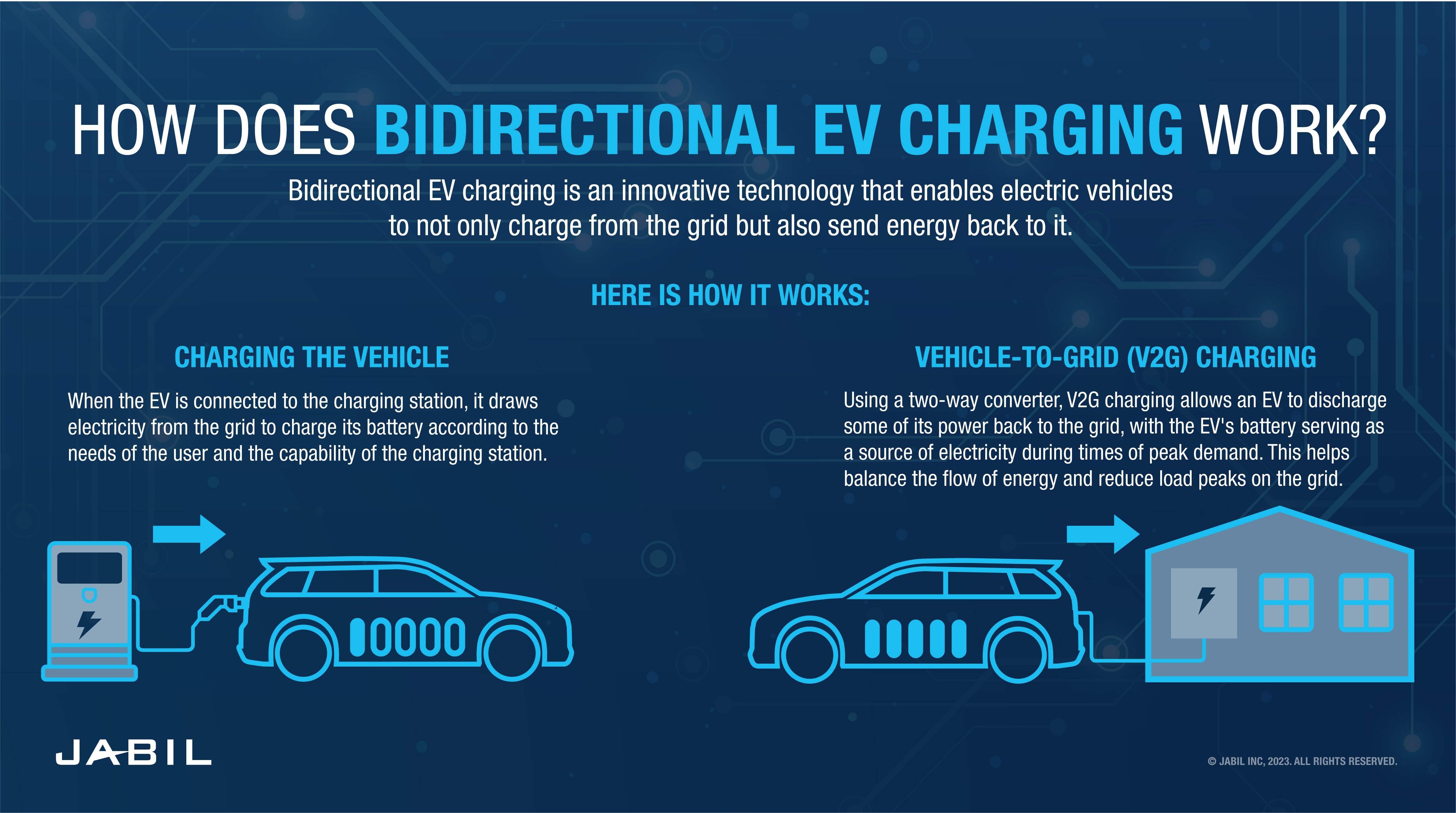
In order for this technology to become a reality, manufacturers must develop compatible hardware and software solutions that are plug-and-play ready for consumers. Ford has rolled out a Home Integration System that would allow F-150 Lightning owners to use their pickup trucks as automatic backup power sources in the event of an outage, partnering with a designated installer to make setup simple for consumers.
The Nissan Leaf has technically had hardware to allow bidirectional charging since 2013. However, in late 2022, the OEM received approval for the first U.S. CHAdeMO bidirectional charger, compatible with its 2023 model. Other companies, like Hyundai, and Tesla with its Powerwall battery storage system, have also announced plans for bidirectional charging capabilities in certain models of their vehicles.
The benefits of bidirectional EV charging are vast and could revolutionize how we use and store energy in our cars and homes. It has the potential to significantly reduce emissions, save money on electricity bills, increase the efficiency of our power grids while providing increased reliability of service, and incentivize drivers based on contribution or usage patterns — all while helping us move toward a future powered by renewable energy sources.
Furthermore, as the electric vehicle market continues to grow, innovative new charging technology is emerging to meet the increased demand, such as wireless charging and ultra-fast charging solutions.
6. The next generation of EV charging technology is arriving
Emerging EV charging technologies go beyond simply plugging a vehicle into a charging station. Here are a few to keep your eye on over the next three to five years.
Wireless charging
Much of the focus around EV charging is to create a streamlined, automated process that has minimal impact on the environment and infrastructure resources. To make this goal a reality, many companies are looking to wireless EV charging to create a better user experience given the lack of cables and power cabinets involved.
One approach entails EVs parking on top of a pad that has a magnetic resonance system in the ground. With less downtime spent charging, this model appeals to fleet vehicles that need to charge while idling and is similar to the technology already used at weigh stations.
In late 2020, global standards for wireless EV charging were enacted by the Society of Automotive Engineers (SAE). Prior to this, the lack of regulation, applicable business cases and the associated production costs were major obstacles in developing any meaningful wireless charging initiatives. With big-name manufacturers like Nissan, BMW, and Renault exploring wireless charging programs — as well as third-party manufacturers developing their own platforms for fleet and personal use — wireless charging tech looks to be an emerging and significant player in building out EV charging infrastructure.
Smart roads
Smart roads are an emerging wireless technology that could revolutionize the way electric vehicles are charged — eliminating the need for drivers to stop at a charging station or plug in their car when it needs power. These roads are embedded with copper coils buried underground. As the car drives or is parked over the road, power is transferred magnetically to a receiver pad on the car’s underbelly to charge the battery. Widespread adoption of wireless charging via smart roads could mean EVs require smaller, lighter batteries that hold less charge at a time, helping to reduce the overall price of the vehicle.
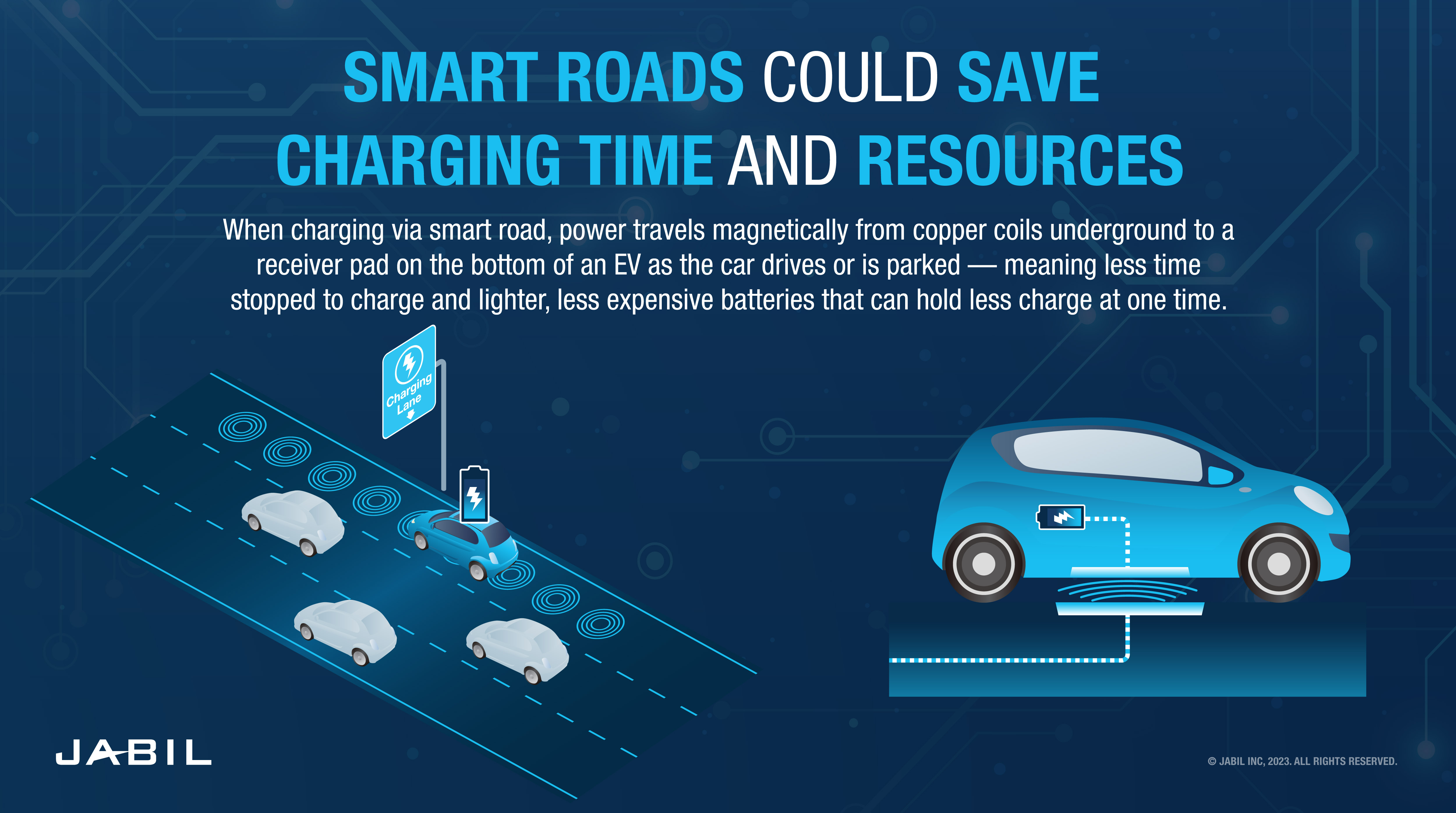
It is worth noting that smart roads that charge EVs are still very much in the experimental phase. Electreon is partnering with Ford and the state of Michigan to build the first real pilot, a 1-mile stretch of road with wireless charging that can be used while driving or stationary, in Detroit. There is a similar project in Visby, Sweden, that uses 1.6 km of road between the city and the local airport for wireless charging as drivers travel along the road.
However, due to its relative novelty, the costs associated with wireless charging — and therefore the models for who would pay for the electricity they require — are not yet clear. Some experts suggest that the electricity costs could be included in the road tolls or taxes paid by drivers, similar to how drivers of traditional gas-powered vehicles pay taxes on fuel.
Still, real cost savings could be realized in the reduction of needed equipment. An analysis by McKinsey found a 50% reduction in the cost of ownership of wireless chargers vs. traditional cable chargers. They also found that charging wirelessly helped manage energy demands for larger vehicles, saving one logistics company 50% on their energy costs.
With the right approach and solutions, smart roads could potentially provide an efficient way for electric vehicle drivers to charge their cars while on the road, without adding a significant financial burden.
Artificial intelligence
One of the first major evolutions to our EV infrastructure will be the incorporation of robotics and AI. There are already multiple robotic EV charging units available on the market. EV Safe Charge, a charging tech provider, recently unveiled ZiGGY, a mobile robot that can come to your parking spot and charge your vehicle.
ZiGGY can also be summoned to your EV through a mobile app or your car’s infotainment system to charge or save a parking spot ahead of time. According to its creators, ZiGGY can process Level 2 charging speeds with expectations to increase to Level 3 in the first year of production.
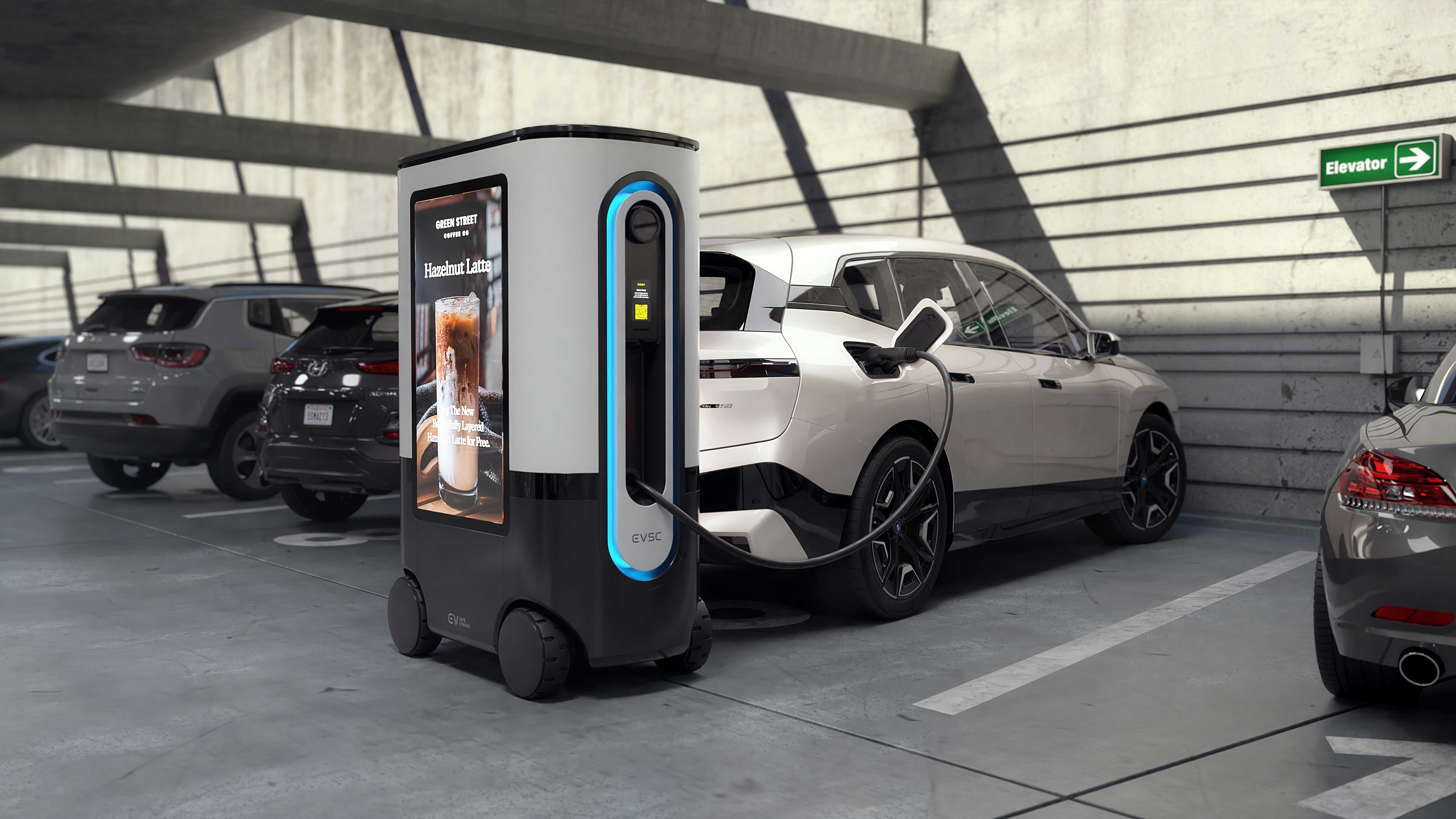
ZiGGY can be summoned directly to your EV (PHOTO: BusinessWire/ZiGGY)
Ford has also developed a prototype robot charging station that would operate similar to the ZiGGY model. The idea is for the entire process to be automated with as little human involvement as possible — drivers would first use their smartphone to summon the robot to their location. Then, the unit attaches its charging arm to the car’s inlet using a camera system. According to Ford, this product could greatly assist elderly and disabled drivers.
Faster onboard charging
As demand for faster and more efficient EV charging solutions grows, manufacturers are now looking at building faster onboard charging capabilities into the vehicles themselves. These chargers will offer higher power outputs, allowing EVs to recharge in a fraction of the time.
Porsche is one of the most recent examples, upgrading the onboard charger on its Taycan model to 19.2 kW. A full charge now requires roughly five hours instead of 10 as it previously did, but the stronger performance does require drivers to purchase Porsche’s proprietary at-home charging system (also a 19.2 kW AC charger). As more OEMs investigate the potential for combining a faster onboard charger with traditional cable charging, the aim is to offer an experience that is as seamless, convenient, and fast as refueling a traditional gasoline car.
The electric vehicle market continued growth means charging technology innovations will be needed to meet the increased demand. An evolving EV charging infrastructure is critical for EVs to become a viable alternative to traditional vehicles.
Charging Infrastructure: The Impetus for Global EV Growth
It is expected that, by 2030, most new cars purchased worldwide will be electrified in some way (i.e., battery electric vehicles, plug-in hybrid vehicles, full hybrid vehicles, or fuel cell). S&P Global Mobility estimates that 47% of passenger cars sold that year will be battery electric vehicles (BEV). While this would represent roughly half of new cars in North America (46%) going fully electric, S&P expects about 64% of Europe's car market and 60% of China’s will become electrified by 2030.
The “EV tipping point” is expected in 2025 — when roughly one in four cars sold (24%) will be BEVs. Compare that to 2022, when only about 10% (just over 8 million) vehicles purchased were EVs. With the number of EVs on the roads expected to grow by tens of millions in less than a decade, the associated charging infrastructure will need to scale accordingly.
Making the necessary shift to widely available EV charging infrastructure will be a major challenge due to the already major capital investments in traditional or legacy products. Companies that provide the energy for ICE vehicles still have enormous real estate and retail store investments devoted to selling gas. How they will adapt this infrastructure and what its job will be in 2030 or 2035 remains to be seen.
Even with this significant challenge looming, the common and immediate goal everyone involved seems to agree on is to improve the availability of public EV charging. Developing batteries with alternative compositions and improving battery production capacity and cell-to-chassis technologies also carry game-changing implications for EV adoption. Major public and private investments in the United States and international markets are already being seen, showcasing the confidence in EV tech and its potential for helping reach net-zero emissions.
Overall, the future looks bright for EVs. Continual innovation among engineers and logistical backup from manufacturers will go a long way in setting up an EV-focused infrastructure that provides more people access to electric vehicles.
How can Jabil help you meet your EV charging goals? Contact us.
No matter how complex or demanding the project, Jabil's automotive and transportation team is helping today’s innovators solve it. Get started with a trusted partner.

